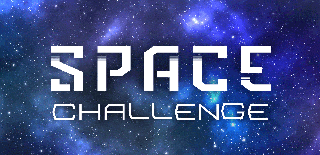Introduction: Star Coat
I have wanted to play with wearable tech for a while now and this is my first attempt. It combines my interest in hobby electronics with my love of space and shiny things and I would recommend trying this project to anyone who wants some constellation clothing.
My coat shows the constellation Orion and has scientifically accurate star colours and placements. The technology is relatively simple and it was a nice way to pass a few evenings with a needle and conductive thread in hand.
Step 1: What You Need
You will need:
- An Adafruit Flora board
- Adafruit NeoPixels
- A needle
- A battery pack
- Conductive thread
- A coat you want to decorate
- Clear nail polish
- Something to mark the pattern with (I used a dress makers pencil)
Step 2: Find Your Design
The constellation I chose to use was Orion, famous for the three stars which make up his belt.
I used an overlay from a constellation book to draw out the pattern and work out the correct angles between the stars. I then used a dressmakers pencil to copy this pattern out onto the coat.
Step 3: Sewing the Circuit
Position your board where you want it to go on the coat, I wanted mine to be visible so I added it to the front.
Instead of wires, wearable tech uses conductive thread to make connections between parts. You use this just like regular thread, guiding it through fabric with a needle. Flora boards use holes surrounded with conductive pads as their input and output pins, so a good connection can be made just by passing the thread through the hole a few times and tying it off. Make sure this is nice and tight to ensure a stable connection.
The NeoPixels have 4 connectors, one positive (+), one negative (-), one input (↑) and one output (↓). Negative connects to GND on the Flora, positive to VBATT and the input to whatever pin you are using in your code (mine is D6).
I was concerned about the wires touching on the back when the coat flexes, so I coated the wires with clear nail polish to create a barrier. I also cut the trailing thread very short to minimise contact.
Step 4: Adding More NeoPixels
More NeoPixels are added in one continuous line with one output leading to one input, with all the positive terminals connected on one side and the negatives connected on the other. I continued to add nail polish to the reverse to minimise unwanted connections.
Make sure to test the NeoPixels are working each time you add more, as it is hard to go back without cutting and re-tying thread which looks messy.
Step 5: The Code
The Flora board can be programmed using the Arduino IDE, but it does need a bit of setup.
Detailed instructions can be found here: https://learn.adafruit.com/add-boards-arduino-v16...
The important points are to make sure you install the boards (through the boards manager) and the libraries (through the libraries manager). The code I used can be found in the file attached to this step.
NeoPixels can do lots of exciting tricks which I recommend you play with, but for this project I just wanted them to remain a fixed colour, which was quite simple.
I wanted the coat to be scientifically accurate, so the stars are the correct colour for the type of star they really are. I looked up each star in the constellation to find out what type it is (stars are classified by how big and hot they are) and used this site to translate that into an RGB colour.
I tried the coat with the values I got from here, but found it was dazzlingly bright and they all appeared mostly white. I set all the colours to be about a tenth of the intensity which resulted in much nicer colours at a dim glow.
Attachments
Step 6: Finished Coat
The coat is powered from a battery pack hidden just inside the bottom corner, for which I sewed on a small black pouch.
As a future project, I want to install a small clap sensor so I can trigger all the lights to briefly flash in rainbow colours and I will call it 'Disco mode'.
Thanks for reading and enjoy sewing your own starry circuits.

Participated in the
Space Challenge

Participated in the
Microcontroller Contest












